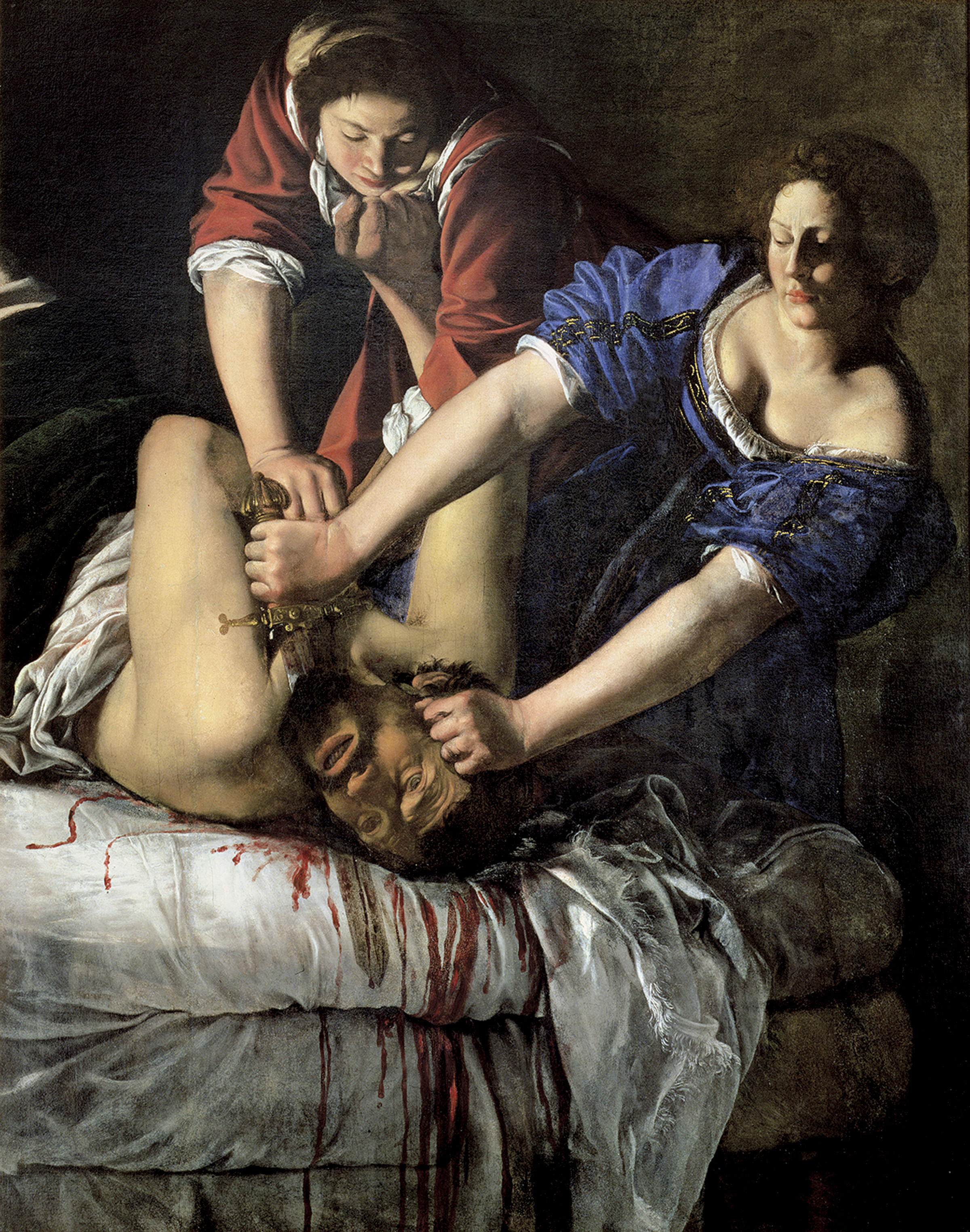Significant women painters able to pursue a professional career, earn a living from their vocation, and receive public recognition barely existed until the late 19th century. A rare exception was Artemisia Gentileschi, generally recognized as one of the great painters of the Italian Baroque period. As Harris noted, “Artemisia Gentileschi is the first woman in the history of western art to make a significant and undeniably important contribution to the art of her time” (
1, pp. 118–119).
In her work, Artemisia, like her father Orazio, embraced the radical naturalistic tradition initiated by Caravaggio, which as Christiansen observed, she took to a new level: “The brush is handled with great looseness. The surface effects—achieved by a constant layering and blending of lights and darks—are incomparably richer and the harsh focused illumination of Caravaggio is exchanged for the haunting effects of candlelight used less to freeze the action within the confines of the canvas than to animate it and suggest an expansion of space beyond the frame of the picture” (
2, p. 107).
The magnitude of her artistic achievement has sometimes been obscured by historical preoccupations with lurid and sensational aspects of her early life history. These include posing for her father as a nude life model; her rape by one of his studio assistants, Agostino Tassi, when she was 17; and the subsequent trial of Tassi, during which her testimony was given while strings were tightened around her fingers. This torture was considered comparatively mild and ostensibly was administered to ensure the veracity of her deposition. Shortly after the trial (the rapist was convicted), Artemisia married and decamped from Rome to Florence. There she gave birth to four children, and her career, freed from the shadow of her father and his atelier, flourished under the patronage of the Medici court.
Artemisia was the oldest of four children. Her mother died when she was 10. She began her apprenticeship in her father’s studio as a teenager. Her father was an established but middling painter until his work was transformed by his encounter with Caravaggio in 1600. Christiansen asserts that “this was the central event of his life—the work of Caravaggio demanded a rethinking of the relationship between artist and model, the imagined and the real, the painter and his artifact. In the critical language of the day it opposed truth, or
il vero, to verisimilitude (
verosimile) by which ordinary experience was transposed into the exemplary and ideal” (
3, p. 5). Orazio went on to achieve considerable renown as a Caravaggist, and he was appointed a court painter to King Charles the 1st of England.
By 1610, at the age of 17, Artemisia had created the stunning painting
Susanna and the Elders, in which a beautiful maiden is spied on in her bath by two lascivious old men. Some critics have suggested that this painting had autobiographical meaning for Artemisia and that the two elders represent her father Orazio and her rapist Tassi. Christiansen commented that in Artemisia’s paintings “we ought not to underrate the role of anger in [her] work—not simply against Tassi—but against her father and the circumstances of her life, both private and professional” (
2, pp. 111). Her remarkable
Judith and Holofernes, reproduced here, speaks to this issue.
Artemisia had an illustrious career in Rome, Florence, Naples, and Venice. She achieved substantial recognition, and her work was sought by aristocratic agents for numerous European courts. In addition, she was praised in intellectual circles; Galileo was a friend and admirer, as were numerous distinguished poets and writers. Ultimately, she can be celebrated as a great female artist who surmounted many barriers in a male-dominated world. She set a powerful early precedent for the feminist movement of our own times.


